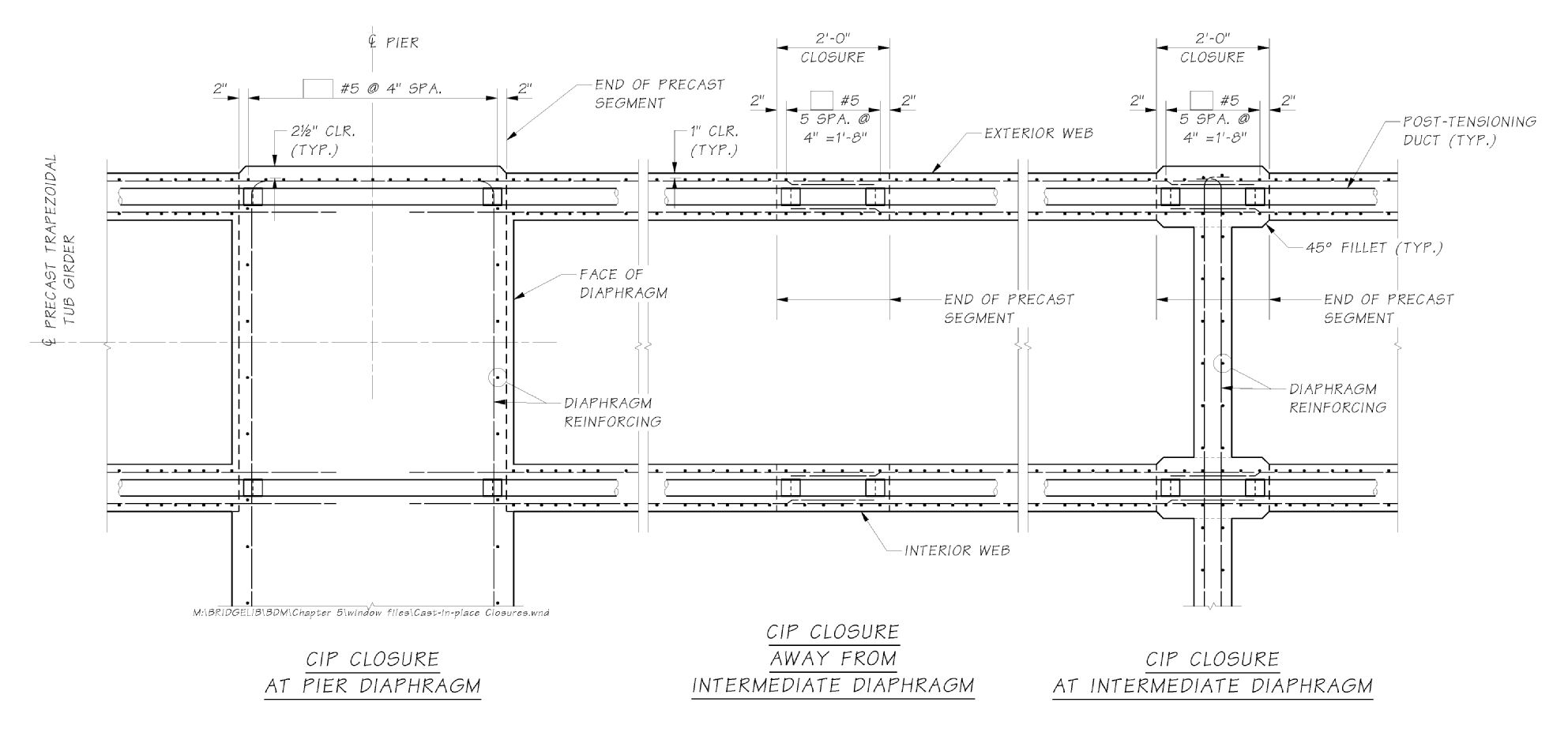
2. The effects of in-plane and out-of-plane forces of curved tendons as prescribed in LRFD article 5.10.4.3 shall be investigated during the design. When tendons curve in two planes, the effects of in-plane and out-of-plane forces shall be added. Adequate reinforcement shall be provided to confine tendons at CIP closures and at intermediate pier diaphragms. The reinforcement shall be proportioned to ensure that steel stress during jacking operation does not exceed 0.6fy. 3. Adequate reinforcement shall be provided to confine tendons at CIP closures and at intermediate pier diaphragms. The reinforcement shall be proportioned to ensure that steel stress during jacking operation does not exceed 0.6fy. 4. The clear spacing between ducts at CIP closures of pier diaphragms shall be 2.0 in. min. The duct diameter for WSDOT Standard spliced girders shall not exceed 4.0 in. for spliced I-girders and 41/2 in. for spliced Tub Girders. 5. On the construction sequence sheet indicate that the side forms at the CIP closures and intermediate pier diaphragms shall be removed to inspect for concrete consolidation prior to post-tensioning and grouting. 6. Coordination shall be made with the Architect for final configuration of closures The attached figure shows the concrete cover and stirrups requirement at CIP closures. The above requirements apply to both spliced I-girders and spliced tub girders.
WSDOT BDM requires a minimum of 2 ½ in. concrete cover for cast-in-place post-tensioned superstructures. This requirement is now extended to CIP closures of spliced girders to ensure the proper flow and vibration of concrete through reinforcement and ducts. Removing the side forms at the CIP closures allows inspectors to ensure the soundness of concrete prior to post-tensioning and grouting. The in-plane and out-of-plane force effects of curved tendons if not considered in design could result in concrete spalling and duct failure during post-tensioning. The minimum reinforcement requirement is to provide adequate resistance to in-plane and out-of-plane force effects of curved tendons during post-tensioning. The final configuration of closures should be consulted with the Architect on highly visible bridges, such as under-crossing on state highways.
|
